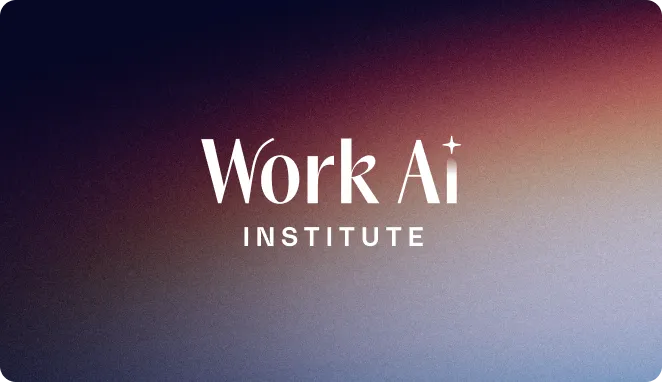- Agentic RAG Overview: Agentic RAG enhances traditional retrieval-augmented generation (RAG) by incorporating autonomous AI agents, enabling real-time decision-making, adaptive workflows, and deeper reasoning suited for complex tasks.
- Key Differences from Traditional RAG: Unlike traditional RAG, which follows a static workflow, agentic RAG allows AI agents to adapt retrieval processes based on findings, validate context dynamically, and tackle multi-faceted tasks through specialization and collaboration.
- Benefits and Applications: Agentic RAG provides smarter, more relevant responses, scales effectively in enterprise environments, and connects directly to live knowledge sources, enhancing tasks such as workflow automation, document analysis, and personalized internal search capabilities.
The rapid advancement of generative AI is transforming how people access and act on information at work. Large language models (LLMs) have become powerful tools for interpreting natural language and generating human-like responses — but they still have limitations. Most notably, they can’t access real-time or organization-specific knowledge unless that data is already part of their training.
Retrieval-augmented generation (RAG) is one solution to this problem. By combining the generation capabilities of LLMs with dynamic data retrieval from trusted sources, RAG enables more accurate and up-to-date answers.
But as tasks and queries become more complex, even traditional RAG systems can fall short. That’s where agentic RAG comes in — an approach that embeds autonomous AI agents into the retrieval pipeline to enable deeper reasoning, smarter routing, and more adaptive workflows.
What is agentic RAG?
Agentic RAG is a next-generation implementation of retrieval-augmented generation. It enhances traditional RAG systems by incorporating AI agents — autonomous components that make decisions, plan actions, and coordinate with tools or other agents in real time.
These agents don’t follow a rigid, predefined workflow. Instead, they dynamically assess what’s needed for each task — determining which sources to query, how to refine context, and how to sequence steps to generate an accurate, helpful response.
This makes agentic RAG a better fit for complex, multi-step workflows that demand nuance, domain expertise, and adaptability.
How agentic RAG Differs from traditional RAG
Traditional RAG typically follows a static sequence: retrieve documents, feed them into the LLM, then generate a response. It works well for straightforward queries but can fall short when the context is unclear or the task involves reasoning across multiple systems.
Agentic RAG introduces a more flexible and intelligent approach. Agents can:
- Adapt retrieval in real time based on what they find (or don’t find).
- Validate and refine context by re-querying or exploring alternative sources.
- Break down complex tasks into subtasks and assign them to other agents.
- Pull from multiple systems rather than relying on a single knowledge base.
In short, agentic RAG doesn’t just fetch information — it reasons through the process, tailoring the approach to the task at hand.
How do AI agents enhance RAG?
AI agents bring decision-making and specialization to the retrieval pipeline. Rather than blindly pulling data, they act more like collaborators — deciding what actions to take and when.
For example, if someone asks, “Summarize this contract and flag anything that violates our procurement policy,” an agentic RAG system might:
- Use one agent to extract key clauses from the contract.
- Use another to retrieve procurement policies from your internal wiki.
- Use a third to compare and highlight conflicts.
- Summarize the results in clear language for review.
Because each agent can specialize in a particular domain or task, the system can scale more effectively across use cases — and deliver higher-quality results.
Key benefits of agentic RAG vs. traditional RAG
Smarter, more relevant responses
Agents iterate on retrieval until they have the right context — improving the quality and accuracy of the final output.
Built for complexity
Whether it's analyzing contracts, surfacing trends across sales notes, or handling multi-step support workflows, agentic systems can manage layered tasks from end to end.
Scalable and modular
Need to pull from a new system or expand to a new domain? Agentic RAG lets you add new agents or tools without rewriting the entire pipeline.
Grounded in live knowledge
By connecting directly to the tools and data your teams use, agentic RAG delivers answers based on real-time information — not outdated snapshots.
Agentic RAG architectures and components
Agentic RAG systems are built on modular components that collaborate to retrieve, reason, and respond. These include:
Router agents
These assess the task and determine the best source or tool to query — acting as traffic controllers in simple implementations.
Multi-agent systems
In more complex setups, agents specialize in retrieving from specific systems or handling particular domains. A mediator agent coordinates their efforts and ensures the overall task is completed.
Planning and reasoning agents
These break down user prompts, decide on task sequences, and identify potential edge cases — allowing for deeper analysis and flexibility.
Supporting components
- Knowledge-grounded LLMs generate context-aware responses.
- Vector repositories allow for fast and accurate retrieval.
- Tool interfaces (APIs) connect agents to internal systems like CRMs, ticketing tools, or databases.
Agent memory keeps track of past steps and shared context across tasks.
Applications and use cases
Agentic RAG systems are especially useful in enterprise environments where knowledge is fragmented across systems. Common applications include:
Workflow automation and knowledge support
Help employees get context-specific answers instantly — without searching across five tools or messaging a coworker.
Document summarization and analysis
Legal, HR, or finance teams can use agentic RAG to extract key takeaways from dense materials and align them with internal policies.
Personalized results
Surface information that’s tailored to someone’s role, team, or past activity — improving the experience of internal search or AI assistants.
Research and discovery
Enable product or strategy teams to pull insights from multiple datasets without running dozens of manual searches.
Implementing agentic RAG systems
Standing up an agentic RAG system requires more than just plugging in an LLM. It takes thoughtful infrastructure, reliable coordination, and the right integrations.
Here’s what’s essential:
Language model grounding
Use an LLM that can take instructions, reference external content, and stay aligned with your company’s knowledge and voice.
Data infrastructure
Choose retrieval systems that support fast, accurate, permissions-aware access — including vector databases and indexing strategies that reflect how your organization works.
Agent orchestration
Leverage a framework that supports agent collaboration, memory, and fallback logic. This ensures the system can handle both success paths and edge cases.
Tool integration
Agents must be able to access and act on information from the systems your teams use every day — including wikis, CRMs, ticketing tools, and data warehouses.
Observability and safeguards
To maintain reliability at scale, agentic systems need logging, performance monitoring, and ways to gracefully recover when something goes wrong.
The next step for enterprise AI
Agentic RAG isn’t just a technical improvement. It’s a shift in how AI can support real work. By turning passive retrieval into active reasoning, agentic systems move beyond answering questions — they help solve problems.
And that’s the key insight: agentic RAG makes AI not just smarter, but more useful. It adapts, collaborates, and plans — enabling AI to function more like a teammate than a tool.
For organizations looking to scale AI responsibly and effectively, this model offers a path forward. One where employees get not just faster answers, but better ones. One where automation doesn’t replace expertise — it enhances it. And one where AI evolves from a productivity boost into a strategic advantage.
If that’s the kind of AI future you’re building toward, agentic RAG is worth exploring. Request a demo to find out how Glean can transform your workplace.









